Hatiora: species, home care and reproduction
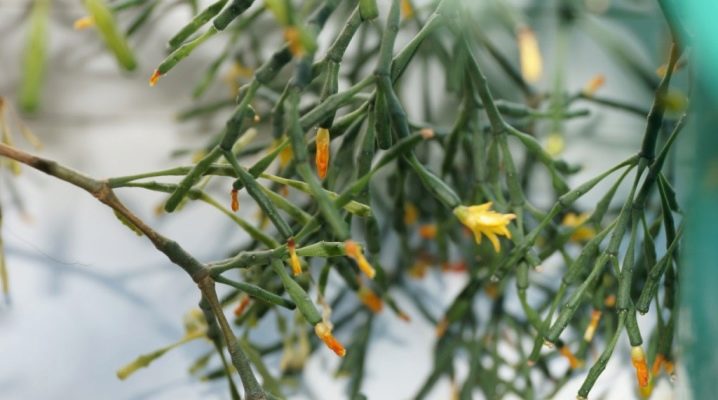
Cacti have been grown for quite a long time as ornamental indoor plants, in the light of which today there are a large number of their species. Among the popular cultures from this family, it is worth highlighting hatiora. The flower is distinguished by its attractiveness, as well as unpretentious care.
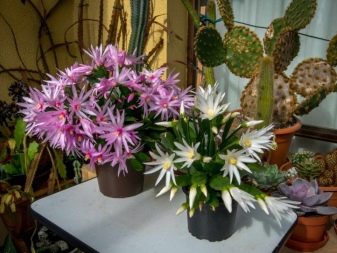
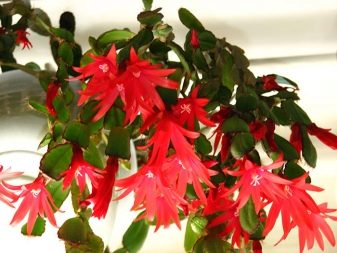
Description
In the cactus family there is a plant called hatiora, which is considered to be the homeland of Brazil. The culture is moisture-loving, and also actively growing in warm climates, in light of which, in its natural environment, it is very often found in tropical forests. The cactus is an epiphytic plant that develops and grows mainly on trees, feeding on them. It owes its unusual name to the scientist who first studied this culture.
Hatiora is an actively branching plant with erect stems, which, during growth, bend under their own weight.
By their structure, the shoots consist of a large number of lobes with different shapes. An indoor flower can contain stems of a cylindrical, flat or club-shaped shape. Thorns are absent in all varieties of this cactus.
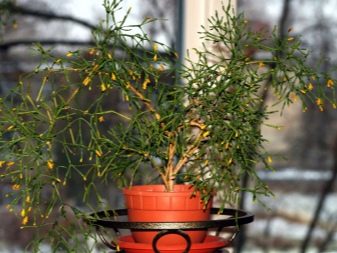

Hatiora enters the flowering phase in the winter months, which is especially appreciated by flower growers. Flowers can be orange or pink, foliage does not form on the plant. A pollinated crop can bear fruit in small berries. In the wild, the length of the stems of a cactus can significantly exceed one meter, as for plants cultivated at home, the length of the shoots in this case will be two times less.
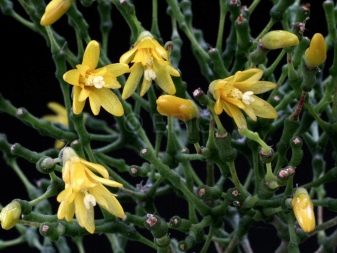
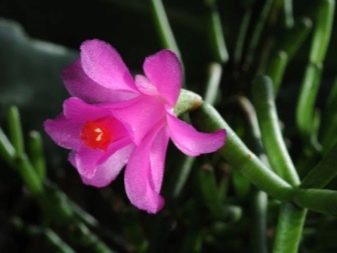
There are many legends about this flower, which indicate that such a plant in the house can bring misfortune to women. Therefore, among the people, the hatiora has formed several more names, for example, the cactus of "dancing bones", "men's tears".
Due to the exotic appearance of the plant, beginners and inexperienced flower growers very often have some concerns regarding the maintenance of a house of such an unusual flower. Hatiora is not poisonous, so you can safely keep it at home not only on balconies and verandas, but also on the windowsills of children's rooms and kitchens.
Even for pets, who in some cases are not averse to feasting on indoor crops, the cactus will be absolutely harmless.
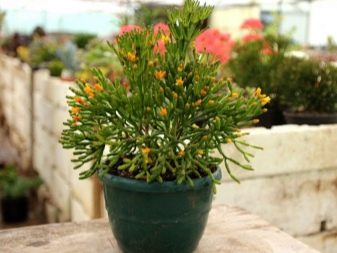

Views
The culture has many varieties, for indoor cultivation they are especially popular the following plants.
- Hatior Gertner. According to the description of this species, small notches on the lobes can form on the stems of this flower. The length of the shoots is about 40-50 centimeters, while the cactus blooms with large flowers, which can reach five centimeters in diameter. The buds are laid on the extreme upper lobes of the stems.
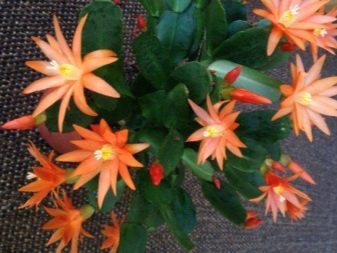
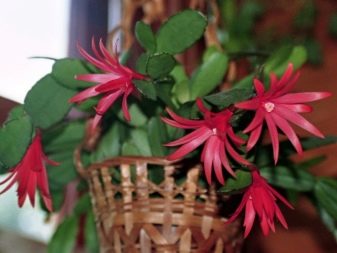
- Hermine. The culture of this species stands out for its curved stems, the length of which is no more than 30-40 centimeters. Stem segments will be no more than 5 centimeters, while their shape resembles a cylinder. There may be a small amount of pile on the plant. The flowers of this cactus are no more than 2-3 centimeters in diameter. The decorative attractiveness of the culture is due to the bright crimson color of the buds and flowers.
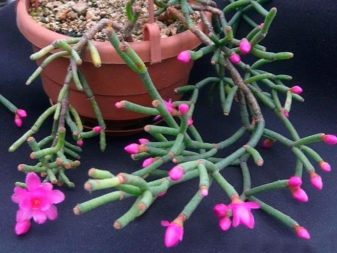
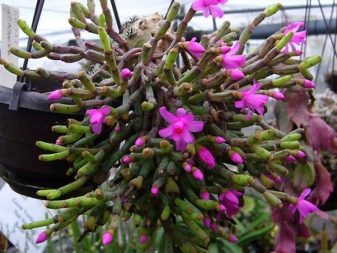
- Hatiora is pink. Shoots tend to develop with a downward slope, as a rule, they will have a green color, but sometimes the plant takes on a red tint. The size of the lobes in the shoots does not exceed 2-3 centimeters. As for their shape, there are cacti with faceted or flat stems. The plant is covered with pile, buds are formed on areoles, their number varies from one to three. The size of the open flowers is 3-4 centimeters in diameter. The color of the flowers is pink.

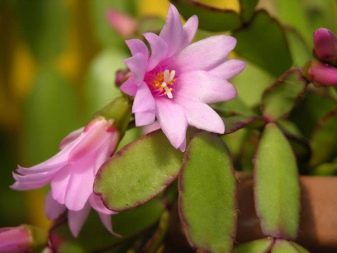
- Saline. A distinctive feature of the structure of this flower is the formation of rather thin stems, the size of the shares of which is at the level of 20-28 millimeters. The shape of each segment has an external resemblance to a bottle.
Solyanka hatiora blooms with yellow-orange flowers, in some cases the color of the buds will be closer to salmon.

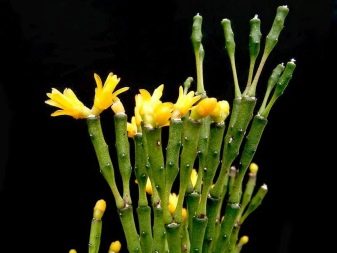
- Salicorniform. The plant is remarkable for its appearance: its shoots are not erect, but, on the contrary, branched, their length varies within 30-40 centimeters. Cactus blooms are yellow, pink or red bell-shaped flowers.
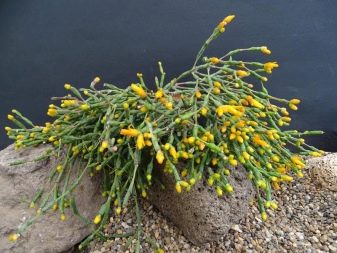
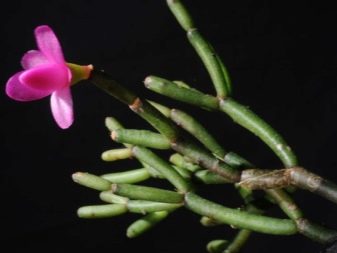
- Five-winged hatiora. A flower with ribbed shoots of short length. The cactus blooms with small white flowers.

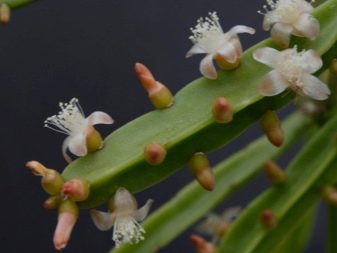
- Hatior Grezer. It is a hybrid indoor succulent variety that combines the external characteristics of the pink variety and the Gertner variety. The plant blooms in the spring months, the flowers during this period are painted in burgundy red.

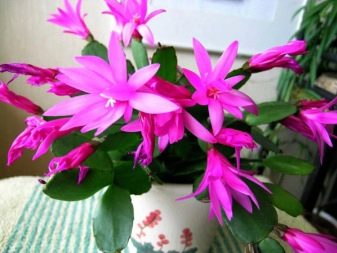
Conditions of detention
Growing a cactus indoors is quite simple, since the culture does not require any special care measures. However, the main nuance, on which the health of the plant largely depends, is the free space in the place of its placement. This is due to the peculiarities of the hatiora to increase its size by actively increasing the length of the shoots and forming a voluminous crown.
Also, the flower will deserve special attention due to the fragility of its stems, therefore rearranging and disturbing the plant once again is not recommended. An adult perennial will require additional support for the stems, since they can easily break under their weight.
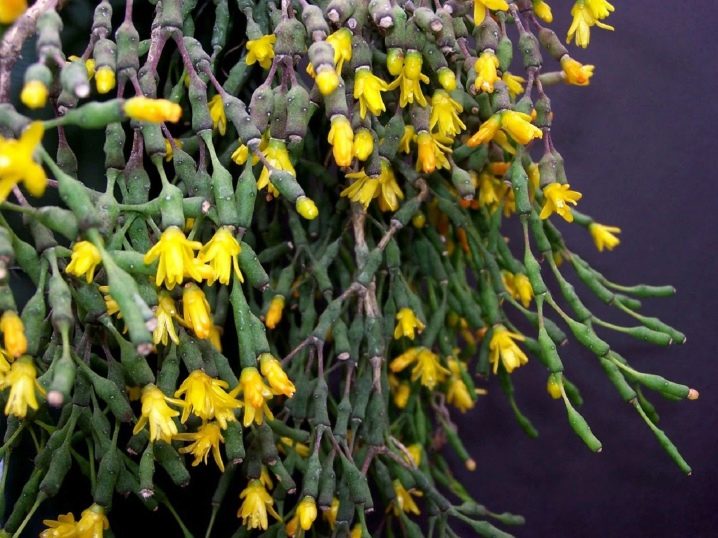
Growing on a windowsill during the summer months involves creating a small shade for the crop, especially at noon, to avoid sunburn. But in constant shade, due to a lack of light, the culture may stop blooming or the number of flowers on the plant will significantly decrease. Such a situation can arise if you choose the wrong place to place the hatiora, especially for window sills facing north. The most suitable side of the world for a cactus will be east or west.
Maintaining a high level of humidity in the room will have a positive effect on the development of culture; this can be done by spraying the plant.
As for the summer months, some growers, in order to provide the flower with conditions close to those that develop in its natural environment, place a container with a cactus in a pallet with moistened pebbles or expanded clay.
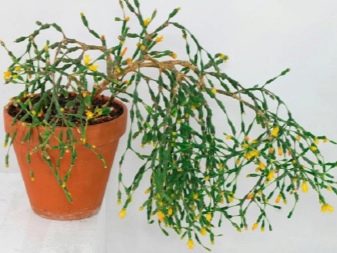
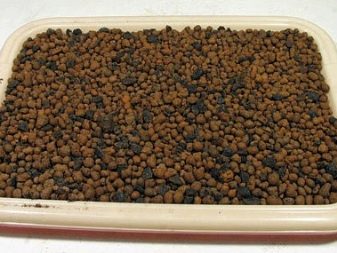
The possibility of cultivating and flowering hatiora largely depends on the air temperature in the house. Thermometer marks will fluctuate depending on the time of year and the phase the plant is entering. As for winter, the succulent will need coolness, at this time it is best to provide the culture with conditions with temperature no more than + 15 ° C, in summer, the average air temperature should be at + 22 ° C.
The cactus enters the resting phase at the beginning of autumn, during this period the air in the room should not warm up more than + 12 ° C, therefore, flower growers often rearrange the culture on a balcony or veranda.
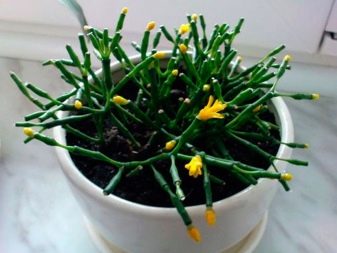

How to care?
Caring for an indoor flower involves the following simple steps.
Watering
The frequency and amount of watering will also vary depending on the season.In the summer, the intake of moisture should be regular, in the autumn months, the frequency of watering is reduced, in winter, the moisture of the cactus can be stopped altogether. However, the introduction of moisture should be dosed, when watering, it is necessary to ensure that liquid does not stagnate in the pot with the plant, the soil should be moist, but not flooded.
Water the cactus with settled water at room temperature. In a pot with a culture, it is more correct to make several holes for the release of excess moisture.
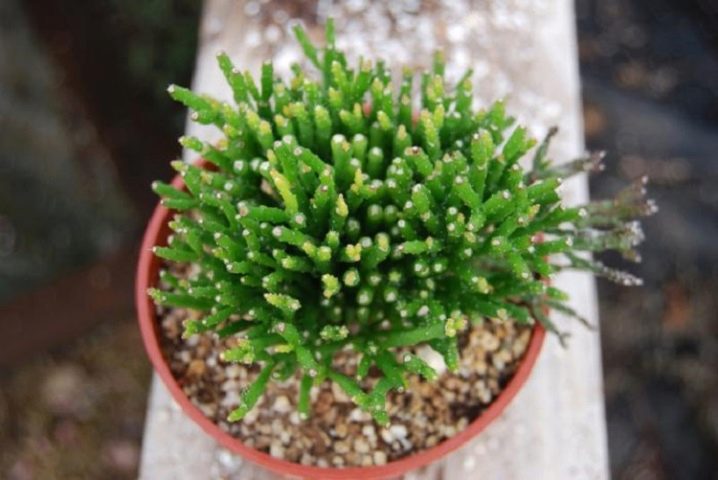
Top dressing
A good time to use the fertilizer will be from April to September, as well as the flowering period of the cactus. The flower grower must provide the culture with additional nutrition in liquid form, introducing the compositions twice a month. In this case, you should use specialized fertilizers intended for cacti, in which there will be an increased nitrogen content and a reduced amount of calcium.
It is not recommended to use fertilizers in the resting phase.
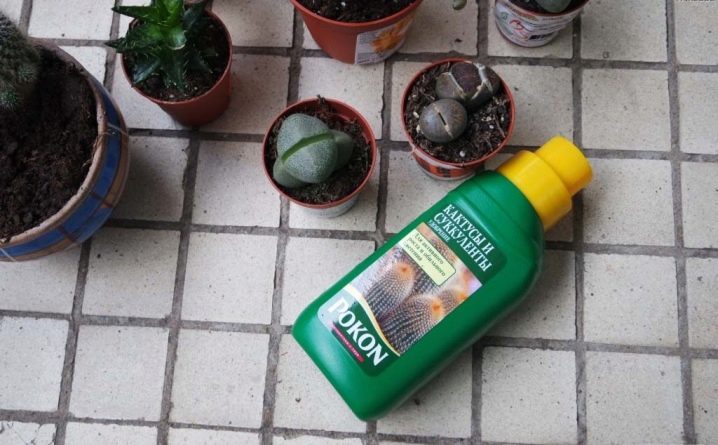
Pruning
For indoor cacti, another main nuance regarding full-fledged development is regular pruning in order to form the crown. This should be done by hand, without using garden tools or knives. The owner of the perennial will need to independently separate the extra shares from the shoots, they should not be torn off, but carefully scrolled, thus it will be possible to avoid unnecessary injury to the plant.
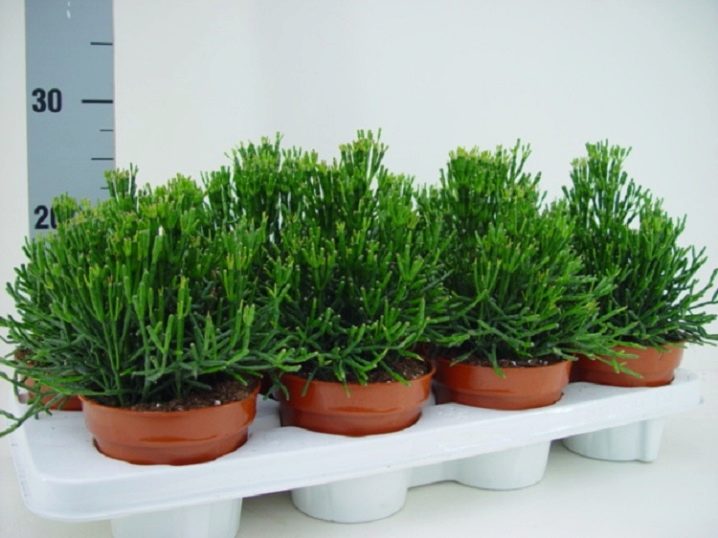
Transfer
Hatiora has certain requirements for the soil: the soil in the pot should be with a neutral level of acidity, as a rule, the substrate for the cactus is prepared from clay-turf soil, sand and gravel. Young crops growing in the home need to be replanted every year. When the plant reaches the age of three, the transplant can already be carried out much less frequently.
The best time for such work will be spring, when the culture has already faded. The whole process involves the transfer of a flower from one container to another, along with an earthen lump. When replacing a container for growing a hatiora, it is worth remembering that the difference in size between the old and new pot should not be too significant, since this can adversely affect the flowering of the crop.

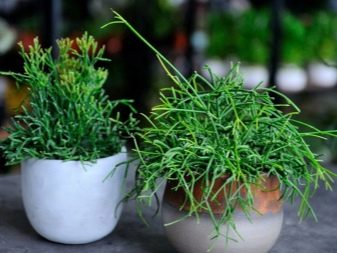
Reproduction
At home, the grower will be able to get a new plant in several ways. For cacti, the method of grafting or cultivation of a flower from seed is usually used. Propagating by cuttings will be the easiest hatiora, in addition, the chance that the result of the work carried out will be getting a new young plant will be much higher in comparison with the option of germinating seeds.
In some crops, the segment from the shoots sometimes crumbles on its own, which gives the grower the opportunity to root the planting material. If there is an independent separation of the segment from the stem, then for reproduction it is necessary to pick up a healthy and young shoot.
At the point of separation, the plant will need to be treated with crushed coal.
Hatiora reproduces by slightly wilted cuttings, therefore, the collected material must be left alone for a couple of days. To activate the growth of the root system, cuttings can be kept in a growth stimulator before deepening into the substrate. After that, the segment is rooted in the soil in a small container, which should be placed in a pallet with damp pebbles. As the shoot grows, you can transplant the culture into a pot.
The seeds are obtained from the berries of pollinated plants. They are buried in the ground in a pot and grown at a temperature of at least + 25 ° C, paying particular attention to moisture. After the first shoots appear, mature crops can be planted in different pots.
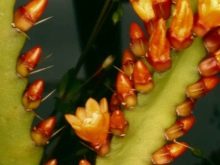

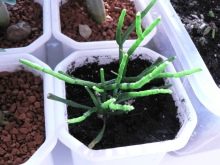
Diseases and pests
The most sensitive hatiora is to fungal and bacterial ailments. In some plants, with such diseases, leaves fall off, as for the cactus, then moist specks will become a manifestation of a bacterial infection, which will gradually grow throughout the flower.As practice shows, antibacterial agents in this case are not distinguished by their effectiveness, therefore growers prefer to save the culture by promptly removing the affected segments on the plant.
If the affected area turns out to be very large, it is worth separating a healthy portion from the mother culture for propagation of the culture by cuttings.
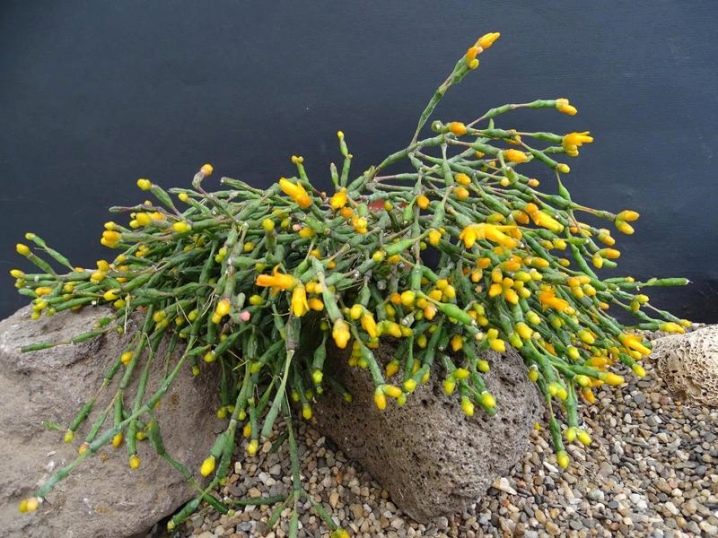
Phytophthora affects the plant due to excessive moisture, when the rhizome of the cactus begins to rot from an excess of moisture. Also, the development of such a disease is possible when a culture is rooting in an already infected soil. The signs of late blight are the wilting of the flower, as well as the change in the color of its shoots from bright green to pale and light. The fungus is treated with fungicides.
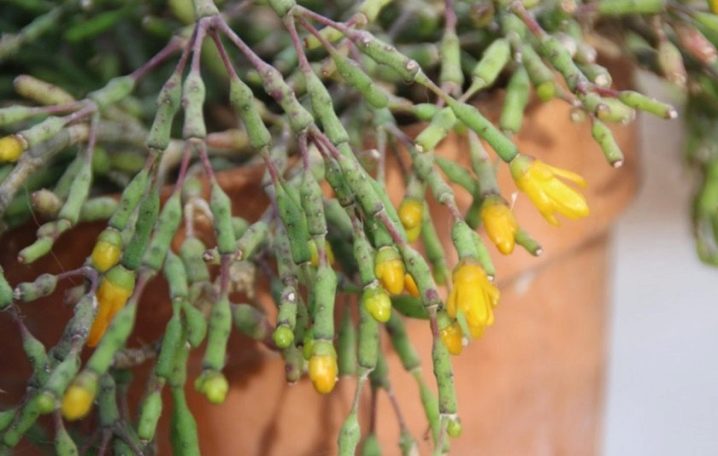
Fusarium is another disease that cactus suffers from. Infection of the crop can occur from damage to the stem or from an insect pest. Store-bought fungicidal compositions will help get rid of the disease.
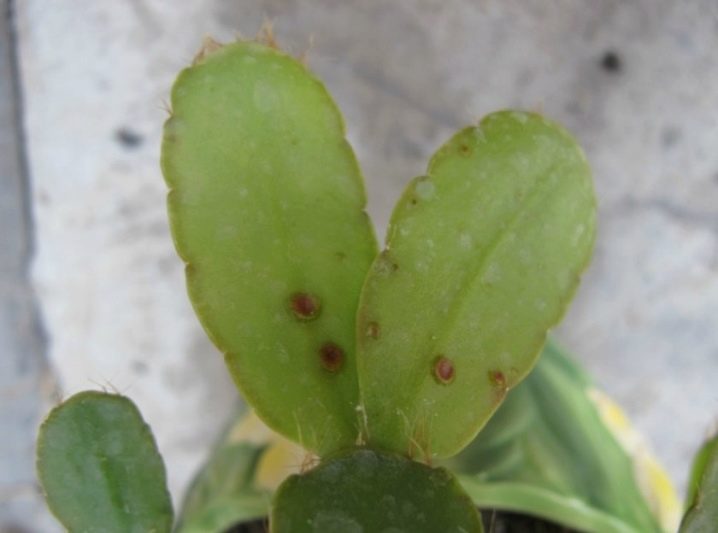
Mites, scale insects, scale insects and whiteflies can pose a threat to hatiors. Pest control is carried out manually, as well as with a warm shower with soapy water. With a large number of insects on the flower, it is recommended to resort to the use of insecticides, such as "Aktara", "Confidor", etc.
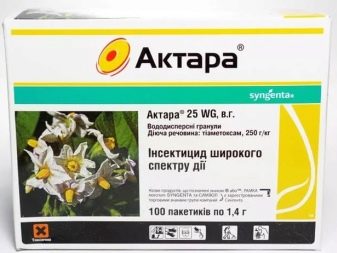

See the following video for the secrets of the care and reproduction of the hatiora.























































Hello! Tell me, Hatiora Germina has released a red stalk (this is not an inflorescence). The plant is 2-3 years old. What does it mean?
The comment was sent successfully.